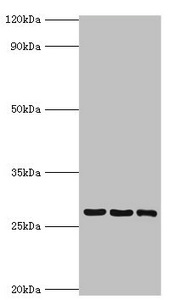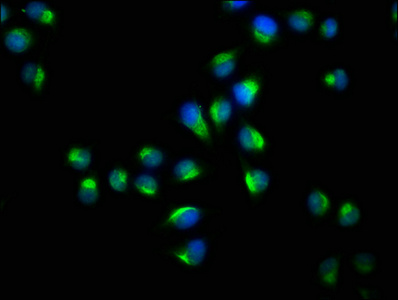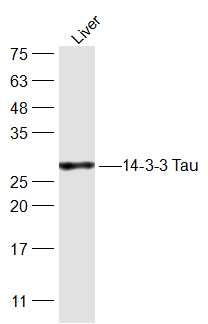
Western blot All lanes: 14-3-3 protein theta antibody at 4ug/ml Lane 1: A549 whole cell lysate Lane 2: Mouse lung tissue Lane 3: HepG2 whole cell lysate Secondary Goat polyclonal to rabbit IgG at 1/10000 dilution Predicted band size: 28 kDa Observed band size: 28 kDa
YWHAQ Antibody
CSB-PA026290ESR1HU
ApplicationsImmunoFluorescence, Western Blot, ELISA, ImmunoHistoChemistry
Product group Antibodies
ReactivityHuman, Mouse
TargetYWHAQ
Overview
- SupplierCusabio
- Product NameYWHAQ Antibody
- Delivery Days Customer20
- ApplicationsImmunoFluorescence, Western Blot, ELISA, ImmunoHistoChemistry
- CertificationResearch Use Only
- ClonalityPolyclonal
- ConjugateUnconjugated
- Gene ID10971
- Target nameYWHAQ
- Target descriptiontyrosine 3-monooxygenase/tryptophan 5-monooxygenase activation protein theta
- Target synonyms14-3-3, 1C5, HS1, 14-3-3 protein theta, 14-3-3 protein T-cell, 14-3-3 protein tau, 14-3-3 theta, protein, theta, tyrosine 3-monooxygenase/tryptophan 5-monooxygenase activation protein, theta polypeptide
- HostRabbit
- IsotypeIgG
- Protein IDP27348
- Protein Name14-3-3 protein theta
- Scientific DescriptionAdapter protein implicated in the regulation of a large spectrum of both general and specialized signaling pathways. Binds to a large number of partners, usually by recognition of a phosphoserine or phosphothreonine motif. Binding generally results in the modulation of the activity of the binding partner. Negatively regulates the kinase activity of PDPK1.
- ReactivityHuman, Mouse
- Storage Instruction-20°C or -80°C
- UNSPSC41116161









